Introduction to Ball Pythons
Ball pythons, also known as royal pythons, are one of the most popular snake species kept as pets. Their gentle temperament, manageable size, and stunning color variations make them ideal for both beginners and experienced snake owners.
Morphological Characteristics
Ball pythons typically grow to about 3 to 5 feet in length. They have a robust body with a distinctive pattern of light and dark scales. Their colors can vary widely, including shades of yellow, brown, and black, often in beautiful combinations that appeal to collectors.
Differences Between Similar Species
While ball pythons share their habitat with other pythons, such as the Burmese python, they are smaller and have a more docile nature. Unlike the more aggressive reticulated python, ball pythons tend to curl into a ball when threatened, hence their name.
Reproduction Method
Ball pythons are oviparous, meaning they lay eggs. The female usually lays between 4 to 10 eggs, which she incubates by coiling around them, maintaining the right temperature and humidity until they hatch.
Rearing Environment
Creating a suitable environment is crucial. Ball pythons thrive in a terrarium with temperatures ranging from 75°F to 95°F. Proper humidity levels of 50% to 60% help them shed their skin effectively.
Rearing Method
Feeding ball pythons is straightforward, as they primarily eat rodents. It's essential to offer appropriately sized prey and ensure fresh water is always available. Handling should be gentle to keep them stress-free.
Disease Prevention and Control
Common issues include respiratory infections and mites. Regular vet check-ups and maintaining clean living conditions can help prevent these problems. Quarantine new snakes before introducing them to prevent disease spread.
Issues to Pay Attention To
Be mindful of their feeding schedule and habitat conditions. Overfeeding can lead to obesity, while improper temperatures can cause stress. Always monitor their behavior for any signs of illness.
Rearing Conditions
Optimal conditions include a secure enclosure, proper heating, and regular cleaning. Providing hiding spots is also important, as it helps them feel safe and reduces stress.
Relationship with Humans
Ball pythons are known for their calm demeanor and can bond with their owners. They are generally easy to handle, making them great pets for families. However, it's essential to respect their needs and provide appropriate care.
Ball pythons make for fascinating and manageable pets. With proper care and understanding, they can thrive in captivity and form lasting bonds with their owners. Whether you’re a seasoned snake enthusiast or a beginner, ball pythons are truly remarkable creatures worth keeping.
Introduction
Ball pythons are not only adored for their gentle nature but also for their stunning array of colors and patterns. These variations have become a significant aspect of their appeal, especially among collectors and reptile enthusiasts. In this article, we’ll explore ten popular color morphs of ball pythons and the factors that contribute to these fascinating variations.
1. Normal Ball Python
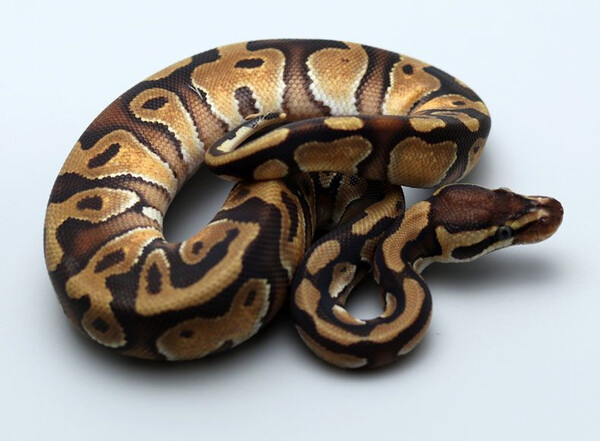
The typical ball python has a base color of brown or tan with black and gold markings. This is the natural coloration found in the wild and serves as a great starting point for understanding other morphs.
2. Pastel Ball Python

Pastel morphs have a lighter, more vibrant coloration compared to normals. Their yellow tones are brighter, and their patterns are often reduced, giving them a more striking appearance.
3. Albino Ball Python
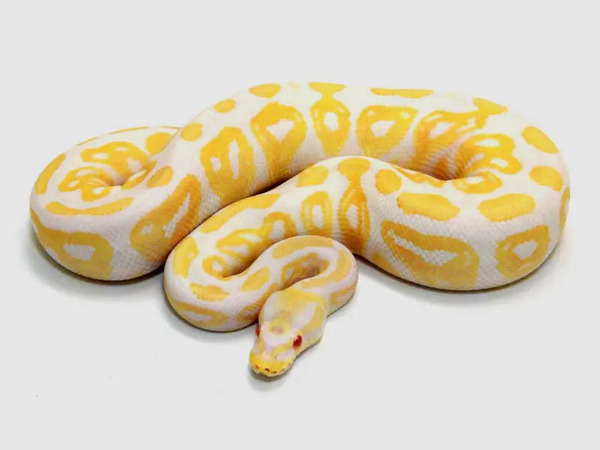
Albino ball pythons are known for their lack of melanin, resulting in a beautiful white or yellow coloration with red or pink eyes. This morph is particularly sought after due to its unique look.
4. Spider Ball Python

The spider morph is characterized by a unique pattern that resembles a spiderweb. They often have a light yellow base with black markings, creating a striking contrast that many find appealing.
5. Banana Ball Python
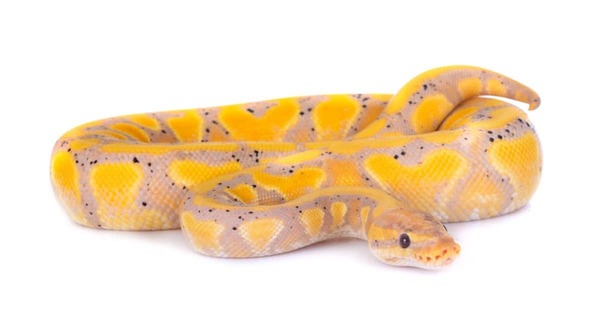
Banana ball pythons are known for their bright yellow and purple spots, giving them a vibrant and playful appearance. They also tend to have a unique fading pattern as they mature.
6. Mojave Ball Python
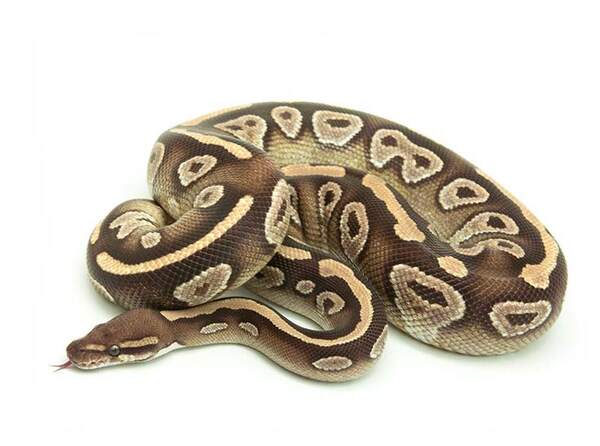
The Mojave morph features a rich, dark coloration with beautiful, intricate patterns. They often have a unique "flame" pattern that runs along their sides, adding to their allure.
7. Cinnamon Ball Python
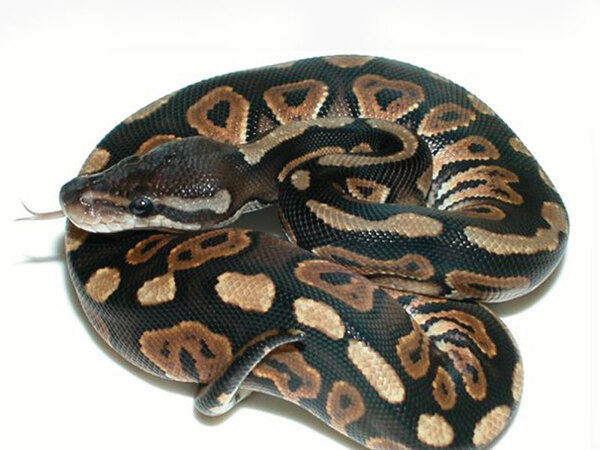
Cinnamon ball pythons have a warm, dark brown coloration with lighter patterns. Their rich tones and distinct patterns make them a favorite among collectors.
8. Clown Ball Python
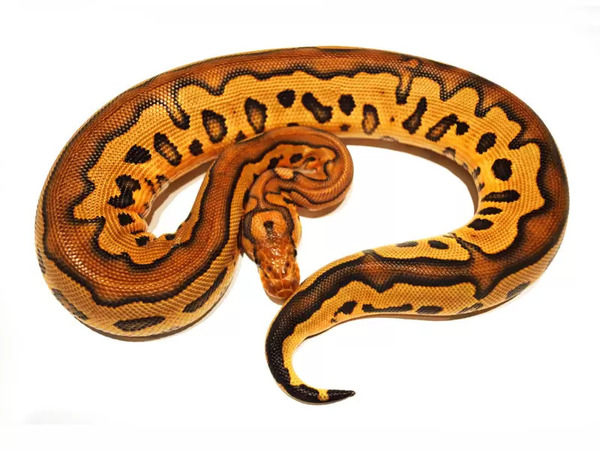
Clown morphs are known for their distinct, reduced pattern and vibrant colors. They often have a more playful appearance with unique color transitions throughout their bodies.
9. Hypo Ball Python

Hypo (or "hypomelanistic") ball pythons have reduced black pigmentation, resulting in a lighter overall appearance. Their colors appear more vibrant, making them a popular choice for breeders.
10. Ghost Ball Python
The ghost morph has a subtle and ethereal appearance with muted colors. They feature a mix of gray, yellow, and light browns, creating a unique, ghostly effect.
Factors Contributing to Color Variations
The stunning color variations in ball pythons arise from several genetic factors:
Genetics: Color and pattern changes are primarily driven by recessive, dominant, and incomplete dominant genes. Breeders select specific snakes to create desired traits, leading to new morphs.
Selective Breeding: By pairing individuals with specific traits, breeders can enhance certain characteristics, resulting in new color variations over generations.
Mutations: Natural mutations in genes can produce unexpected traits. These spontaneous changes can lead to unique morphs that capture the interest of snake enthusiasts.
Environmental Influences: Factors like temperature and humidity during incubation can also affect the development of color patterns, although genetics remain the primary influence.
The world of ball python color morphs is vast and exciting, with each variation bringing its unique charm. Understanding the factors behind these stunning colors helps appreciate the beauty and complexity of these remarkable snakes. Whether you’re a collector or simply an admirer, the diversity of ball pythons never fails to impress!
Introduction
Ball pythons are beloved pets, known for their striking colors and patterns. As a responsible owner, you might wonder about the impact of diet on your snake’s health and appearance. One question that often arises is: can a fatty diet cause ball pythons to change color? Let’s explore this topic in detail.
Understanding Ball Python Coloration
Ball pythons come in various colors and patterns, which are largely determined by their genetics. Different morphs, such as the albino, pastel, and spider, have distinct genetic traits that produce their unique looks. However, environmental factors, including diet, can also play a role in their overall health and potentially influence their coloration.
The Role of Diet in Ball Python Health
Ball pythons are carnivorous and primarily eat rodents. The quality and quantity of their food are crucial for their well-being. A diet too high in fat—such as feeding them excessively fatty prey—can lead to health issues like obesity, fatty liver disease, and digestive problems. These health concerns can indirectly affect their coloration by altering their overall condition and vibrancy.
Can a Fatty Diet Cause Color Changes?
While there isn’t a direct link between a fatty diet and color changes in ball pythons, poor health from an improper diet can lead to duller colors. When snakes are unhealthy or stressed, their colors can appear less vibrant. Factors like shedding, stress, and metabolic issues can all influence how a snake’s colors show.
Obesity and Health Impact: If a ball python becomes obese due to a high-fat diet, it might develop lethargy and health issues, which could cause its colors to appear less bright. Healthy snakes typically exhibit more vivid colors, while unhealthy ones may look faded or dull.
Stress and Environmental Factors: A poor diet can lead to stress, which also impacts color. Snakes under stress may not shed properly, and incomplete or improper shedding can affect how their colors show.
Nutrition and Coloration: A balanced diet rich in nutrients can enhance a snake’s natural colors. For example, providing a varied diet with appropriate prey sizes and occasional vitamin supplements can help maintain vibrant coloration.
Best Practices for Feeding Your Ball Python
To ensure your ball python remains healthy and colorful, consider the following feeding practices:
Balanced Diet: Offer appropriately sized rodents and avoid feeding excessively fatty prey. Stick to a regular feeding schedule and don’t overfeed.
Quality Prey: Choose high-quality, healthy prey. If possible, provide a mix of different types of rodents to ensure a balanced diet.
Monitor Health: Keep an eye on your snake’s weight and behavior. If you notice any changes in coloration or lethargy, consult a veterinarian.
Hydration: Ensure your ball python has access to fresh water at all times. Proper hydration is essential for overall health and vibrant coloration.
While a fatty diet alone may not directly cause color changes in ball pythons, it can lead to health issues that affect their appearance. Maintaining a balanced diet is crucial for your snake's health and the vibrancy of its colors. By providing proper nutrition and care, you can help your ball python thrive and showcase its stunning beauty!
ball pythons can change color, but this change is primarily influenced by a few factors:
Age: Young ball pythons often have different coloration compared to adults. As they grow, their colors may become more vibrant or change in pattern.
Shedding: After a ball python sheds its skin, it may appear brighter or more vibrant temporarily, as the new skin can look different until it settles.
Health: A snake's health can affect its coloration. Stress, illness, or poor diet can lead to duller colors. Conversely, a healthy ball python will often display more vivid colors.
Environmental Factors: Lighting and humidity can impact how a snake's colors appear. For example, certain lighting can enhance or mute colors.
Genetics: Different morphs have specific genetic traits that determine their colors and patterns. Some morphs may exhibit color changes as they mature, such as the banana morph, which fades as it gets older.
Overall, while ball pythons can show some changes in color throughout their lives, significant changes are usually related to growth, health, or environmental factors rather than an intrinsic ability to change color like some other reptiles.
Introduction
One of the fascinating aspects of ball pythons is their unique vision. Many pet owners wonder whether these beautiful snakes can see colors like humans do. Understanding how ball pythons perceive the world can enhance our appreciation for these remarkable creatures.
How Do Snakes See?
Snakes, including ball pythons, have a different visual system compared to mammals. While humans have three types of color receptors (cones) that allow us to see a wide spectrum of colors, snakes have only two. This means that their color vision is limited compared to ours, but it doesn’t mean they can’t see color at all.
Color Perception in Ball Pythons
Research suggests that ball pythons can see some colors, particularly in the red and green wavelengths. They may not perceive the full range of colors, but they likely have a sensitivity to certain hues. Their ability to detect movement and contrast is more developed than their color vision, which helps them hunt and navigate their environment effectively.
Infrared Vision
One of the most fascinating features of many snake species, including some relatives of ball pythons, is their ability to sense infrared radiation. This allows them to detect the body heat of their prey, which can be particularly useful in low-light conditions. However, ball pythons do not have the specialized heat-sensing pits found in other species like pit vipers.
Environmental Adaptations
Ball pythons are primarily nocturnal, meaning they are more active at night. Their vision is adapted to low-light environments, allowing them to see better in dim conditions. This adaptation means their eyesight relies more on contrast and movement rather than color differentiation.
In summary, while ball pythons do have some color vision, it is limited compared to humans. They can likely see certain colors, particularly reds and greens, but their strength lies in detecting movement and contrast. Understanding their visual capabilities helps us appreciate how these snakes interact with their environment and hunt for food, making them all the more fascinating as pets and wildlife.
animal tags: Ball-Python
We created this article in conjunction with AI technology, then made sure it was fact-checked and edited by a Animals Top editor.